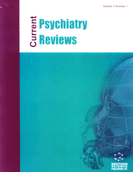Abstract
Background and Objective: Addiction is one of the main health issues worldwide. Severe side effects and nonspecific actions of conventional medications have necessitated the development of new safe and non-invasive modality for addiction treatment. Transcranial direct current stimulation (tDCS) has shown potential treatment effects in substance use disorder and addiction. The present study aims to review the clinical trials on the effects of tDCS for treatment of addiction and discusses the therapeutic efficacy of the technique.
Method: The databases of PubMed (1980-2018), Web of Sciences (1980-2018), Scopus (1980- 2018), CINAHL (1990-2018), and PsycINFO (1990-2018) were searched using the set terms. The titles and abstracts of all the retrieved records in the searching step were carefully reviewed by two authors and the relevant papers with full texts available were collected for further assessments. The date of the last search was 20 May, 2018. The language of the search was English and only records in English were included in the study. The clinical trials with randomized controlled design were included. The addictions to cocaine, alcohol, crack cocaine, heroin, methamphetamine, and nicotine were included in the study.
Results: Twenty-three clinical trials were selected for full analysis. Five were on alcohol, 8 on nicotine, 5 on crack-cocaine, 1 on heroin, 1 on cocaine, 1 on marijuana, 1 on methamphetamine, and 1 two-arm trial simultaneously assessed alcohol and crack-cocaine. The main targets were dorsolateral prefrontal cortex (DLPFC) and FPT regions and the effective electrodes montage was bilateral (anode/cathode over left/right or right/left) DLPFC and dual cathodal on FPT regions. Most of the RCTs showed both polarities in bilateral DLPFC are effective in improving symptoms of addictions, however, for specific types of addictions, we observed the polarity-dependent treatment response. For crack-cocaine, we observed polarity dependent outcome where cathodal DLPFC (cathode over left/anode over right) showed greater therapeutic efficacy than the opposite polarity. In contrary, for alcohol, nicotine addictions both polarities of bilateral DLPFC showed significant therapeutic outcomes.
Conclusion: The current literature shows that tDCS, particularly over DLPFC and FPT areas, may have therapeutic effects in addictions, though the studies are few and suffer heterogeneous methodology and protocols. However, further studies with greater sample size and longer follow up should be conducted to reach a definitive conclusion on the efficacy of tDCS for addictions.
Keywords: Transcranial direct current stimulation, addiction, treatment, clinical efficacy, therapeutic efficacy, substance use disorders.
Graphical Abstract
 51
51 2
2



